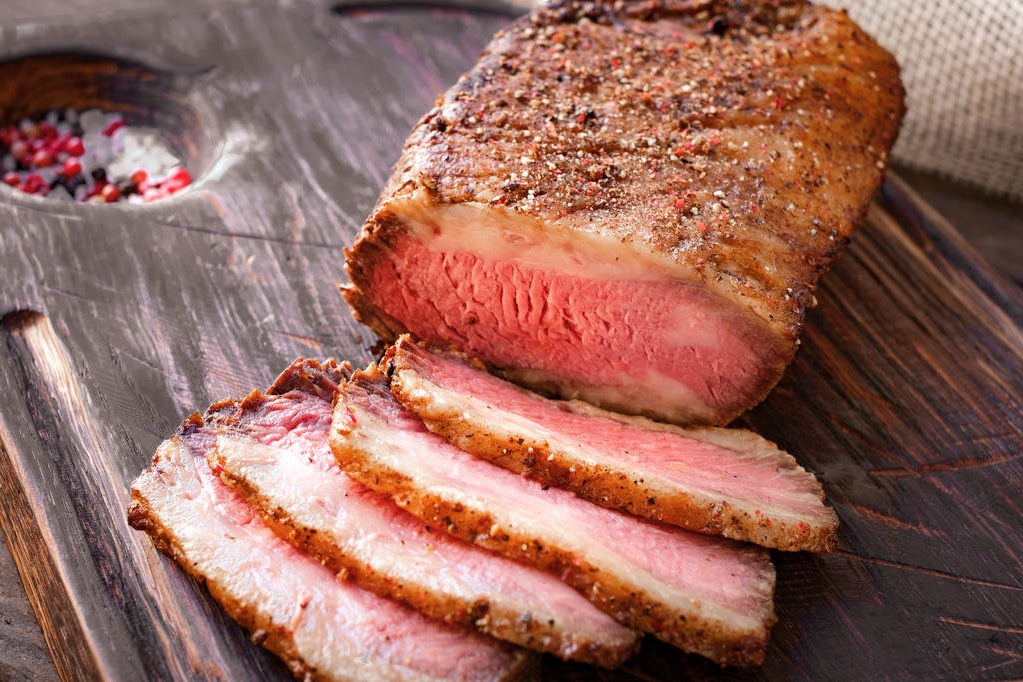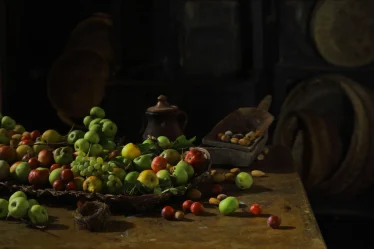
Learn the expert techniques for smoking a perfect brisket with tips from award-winning barbecue pitmaster Aaron Franklin. From selecting the right cut to seasoning and smoking, Franklin walks you through the entire process for achieving tender, flavorful brisket every time.
What Is Brisket?
Brisket is one of the primal cuts of beef, consisting of two pectoral muscles located on the chest. These muscles, which are worked frequently by the cow, contain a lot of connective tissue and fat, making brisket ideal for low-and-slow cooking methods like smoking. A full brisket includes both the lean flat (pectoralis profundus) and the fattier point (pectoralis superficialis), which overlap and are separated by a layer of seam fat.
The History of Brisket in Barbecue
Brisket is now a staple in Central Texas barbecue, but it wasn’t always so popular. In the 1960s, changes to meat processing and transportation made it easier for restaurants to order large cuts like brisket, which was tough but affordable and perfect for smoking. This led to its rise as a barbecue favorite.
How to Choose the Best Brisket
When selecting brisket, look for cuts with good marbling. Prime-grade briskets typically have the most marbling, followed by choice and select grades. It’s important to feel the brisket’s firmness, as a brisket that’s too rigid might lack good fat distribution. If buying brisket in Cryovac packaging, check for excess blood, which may indicate the meat was previously frozen. Avoid frozen brisket, as freezing damages the meat’s fibers and affects its texture.
For authentic Texas-style barbecue, choose a packer cut that includes both the flat and point muscles. A brisket with similar sizes for both muscles will cook more evenly.
How to Prepare Brisket for Smoking
Start by trimming off excess fat to enhance the brisket’s shape and presentation. For beginners, check out Aaron Franklin’s step-by-step guide on trimming brisket.
Seasoning and Applying the Rub
When it comes to seasoning brisket, simplicity is key. The rub should consist of equal parts kosher salt and 16-mesh black pepper. Franklin recommends about ½ cup of seasoning for a 12-pound brisket. Apply mustard or hot sauce to the brisket to help the rub adhere—though the flavor won’t be noticeable after hours of smoking.
Start with the fat side down and apply the slather before sprinkling the rub evenly over the meat. After flipping the brisket, repeat the process for the meatier side. Let the brisket rest for 30–40 minutes at room temperature to allow the rub to penetrate.
Smoking the Brisket
It takes around 12 hours to smoke a 12-pound brisket. Franklin’s smoking method follows these steps:
Stage 1: Initial Smoke Preheat your smoker to a steady 255°F. Place the brisket in the smoker with the point facing the fire. Leave the brisket undisturbed for the first 3 hours, ensuring a constant temperature and light, clean smoke. The early stages of smoking build the flavor base, so monitor the fire closely.
Stage 2: Monitoring the Bark After 3 hours, check the brisket. If it’s turning dry or the bark is uneven, lower the heat slightly. Keep the brisket in a steady, clean smoke. Spritz any dry areas with water to maintain moisture. Increase the smoker temperature to between 260°F and 265°F for the next 3 hours, spritzing as needed.
Stage 3: The Stall After about 6 hours, the brisket will hit the “stall,” where the internal temperature stabilizes around 165°F. This is due to evaporative cooling, where moisture is drawn to the surface. To break through the stall, raise the temperature of the smoker to 280°F to 285°F for about 1 hour. This will help tenderize the meat and break down the collagen.
Stage 4: Wrapping the Brisket Once the brisket has passed the stall, check for tenderness. When the flat is firm but a little floppy, it’s ready to be wrapped. Franklin recommends wrapping the brisket in aluminum foil, then returning it to the smoker to finish cooking.
Stage 5: Wrapping and Finishing Cook the wrapped brisket for 3 more hours at 275°F to 285°F, gradually lowering the temperature towards the end. After removing the brisket from the smoker, let it rest until it reaches an internal temperature of 140–150°F, allowing the carryover heat to continue cooking the brisket.
Stage 6: Checking for Tenderness When the brisket is cool enough to handle, check for tenderness. It should feel soft and pliable, with a slight jiggle when you pick it up. Don’t overcook it—brisket can become dry if left in the smoker too long.
Serving Smoked Brisket
To serve, slice the flat and point separately so your guests can enjoy both lean and fatty parts of the brisket. Cut against the grain for the best texture. Traditional Texas barbecue doesn’t rely heavily on sauce, but you can serve it on the side for those who prefer it.
Aaron Franklin, recipient of the James Beard Foundation Award for Best Chef: Southwest, has mastered the art of smoking brisket. His legendary Franklin Barbecue in Austin, Texas, is recognized as one of the best barbecue joints in the country.
This restructured version retains all the key details and techniques from the original while making it more concise and focused for easier reading.


